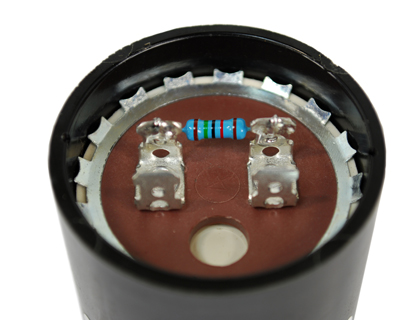Why the start capacitor has a resistor?

The purpose of a start capacitor resistor is used to bleed off residual voltage in the capacitor after it has been disconnected from the circuit after motor start up. Not all start capacitors will use one, as there are other ways to accomplish this.
The important part is that if your original capacitor had one, you’ll need to replace it on the new capacitor. Most replacement start capacitors will not include a resistor. You can check the condition of the old one by checking the resistance value, or just replace it with a new one. This should read somewhere around 10-20k Ohms and around 2 watts. The resistors are usually either soldered or crimped to the terminals.
In a motor circuit with start capacitors built in, you generally only have the capacitors in the circuit for a very brief period of time while the motor’s coming up to speed. Once the motor comes up to speed, the capacitor is no longer needed to generate the rotational torque to get the motor spinning. There will usually be a centrifugal switch or a voltage sensing relay to pull the start capacitor out of the circuit.
With AC current, you have a voltage that is varying in time from positive to negative 50 or 60 times per second (50 Hz or 60 Hz). Ideally, the start capacitor should be pulled out of the circuit when the voltage is at “0,” but this can’t be controlled. If this occurs at any point other than 0 voltage, that charge could be potentially stored in your start capacitor as DC voltage. This could make the capacitor potentially dangerous to handle. Using a bleed down resistor discharges the energy stored in the start capacitor.
To install, simply bend leads to match the width of the start capacitors connection terminals, insert leads, solder and trim. An alternate method is to use crimp on push on connectors. Both methods are common and work well. View the video below for a tutorial on how to install a start capacitor resistor.


